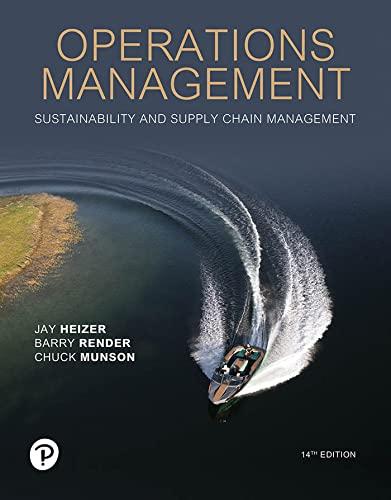Consider a three-firm supply chain consisting of a retailer, manufacturer, and supplier. The retailers demand over an
Question:
Consider a three-firm supply chain consisting of a retailer, manufacturer, and supplier. The retailer’s demand over an 8-week period was 100 units each of the first 2 weeks, 200 units each of the second 2 weeks, 300 units each of the third 2 weeks, and 400 units each of the fourth 2 weeks. The provided table presents the orders placed by each firm in the supply chain. Notice, as is often the case in supply chains due to economies of scale, that total units are the same in each case, but firms further up the supply chain (away from the retailer) place larger, less frequent, orders.a) What is the bullwhip measure for the retailer?b) What is the bullwhip measure for the manufacturer?c) What is the bullwhip measure for the supplier?d) What conclusions can you draw regarding the impact that economies of scale may have on the bullwhip effect?
Recall that the sample variance of a data set can be found by using the VAR.S function in Excel or by plugging each x value of the

mean of the data set and n is the number of values in the set.
Step by Step Answer:

Operations Management Sustainability And Supply Chain Management
ISBN: 9780137476442
14th Edition
Authors: Jay Heizer, Barry Render, Chuck Munson





